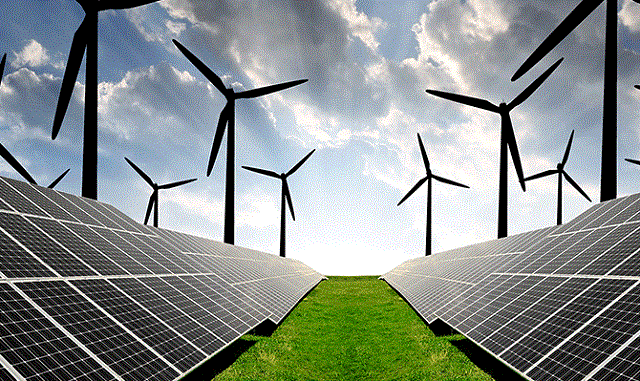EDIORIAL COMMENT: Expedite creation of renewable energy fund

Conscious of the negative effects of fossil fuels on the climate and public health, the world is generally going green.
Many developed countries are decommissioning thermal energy generating plants that belch dirty fumes into the air. Those that are not shutting theirs down are modernising them so that they do not produce as much particulate pollution as before. Natural gas usage is coming up worldwide. It is an emerging energy source, particularly in Southern Africa, but since it is carbon-based like coal governments know its adverse long term environmental impacts.
Instead focus is shifting to solar, wind and biomass energy sources — in addition to the more traditional hydro — that are just as effective, cleaner and less hazardous to the environment.
Zimbabwe refuses to be left behind.
As we reported on Monday, the Government is planning to establish a green energy fund to promote the use of renewables with an initial target of generating 600 megawatts of electricity. In the longer term, the Government wants to generate at least 1 000MW, or 16 percent of national projected generation, through solar and other renewable energy sources by 2025 according to the final draft of a policy document from the Ministry of Energy and Power Development. There is capacity to increase the output to 1 600MW by 2030.
The fund will be backed by a sovereign guarantee, while the Finance Ministry “will develop a detailed plan to enhance the investor confidence and value of the guarantee in the market,” the document says.
Tax concessions will be offered to independent power generators selling electricity to Zesa Holdings, alongside reduced licensing fees.
“Being a clean source of energy, renewable energy projects shall be provided concessions in licensing fees and enjoy relaxations in other licensing requirements,” the draft policy document says.
The country is blessed, said the Minister of Energy and Power Development, Dr Samuel Undenge, with numerous renewable energy resources, that if well harnessed can supply 10 000 gigawatt hours of energy per year.
Renewable energy sources are, indeed, the future and we urge the Government to continue marshalling investment into that area as well as establish the renewable energy fund for more resources to flow into cleaner energy generation.
Electricity is available to about 40 percent of locals, mainly in urban areas, with solar power providing just four percent of all power. About a third of the country’s electricity comes from a large-scale hydropower plant at Kariba.
Going by the domestic installed power generating capacity, the country generates more of its power from coal-fired stations than hydro. Hwange Thermal Power Station has a capacity to produce 920MW of electricity while three smaller plants have capacity to generate 300MW more. This means that, if all existing coal-fired plants are working to full capacity, the country would be generating 1 220MW. On the other hand the Kariba hydro plant has capacity to generate 750MW. A few smaller units on other dams elsewhere contribute but their contribution does not increase hydro capacity to what the thermals produce.
But the energy mix is set to change markedly as the Government makes the conscious effort to go greener, with solar and hydro leading among the renewables.
Just a few days ago, the State Procurement Board announced it had awarded CBZ a tender to float energy bonds to raise $200 million to build two solar stations in Matabeleland South and Manicaland. They will produce 130MW. In addition to these two, four others planned are expected to contribute 155MW to the national grid.
Generation from Kariba is being boosted while there are plans to build the Batoka hydro station on the Zambezi River as well.
Yes, non-renewables are unlikely to go away any time soon given the level of our national development, the plentiful availability of coal and the more immediate need for greater energy security for our developing economy, the Government’s drive to diversify the country’s energy sources is moving in the right direction.
Furthermore, the Government is doing a lot in raising the consciousness among the people on the need to invest in solar energy systems at their homes for lighting, heating and powering gadgets. It is not surprising therefore that it is becoming increasingly fashionable for home-owners to erect solar geysers on the roofs of their properties. In rural areas traders are making roaring business selling solar lamps.
Such people have not only turned to cleaner solar energy but are also saving money for themselves. They are playing their part in reducing pollution too.
The green energy fund, which we expect to be set up as soon as possible, will deepen and widen these benefits.










Comments